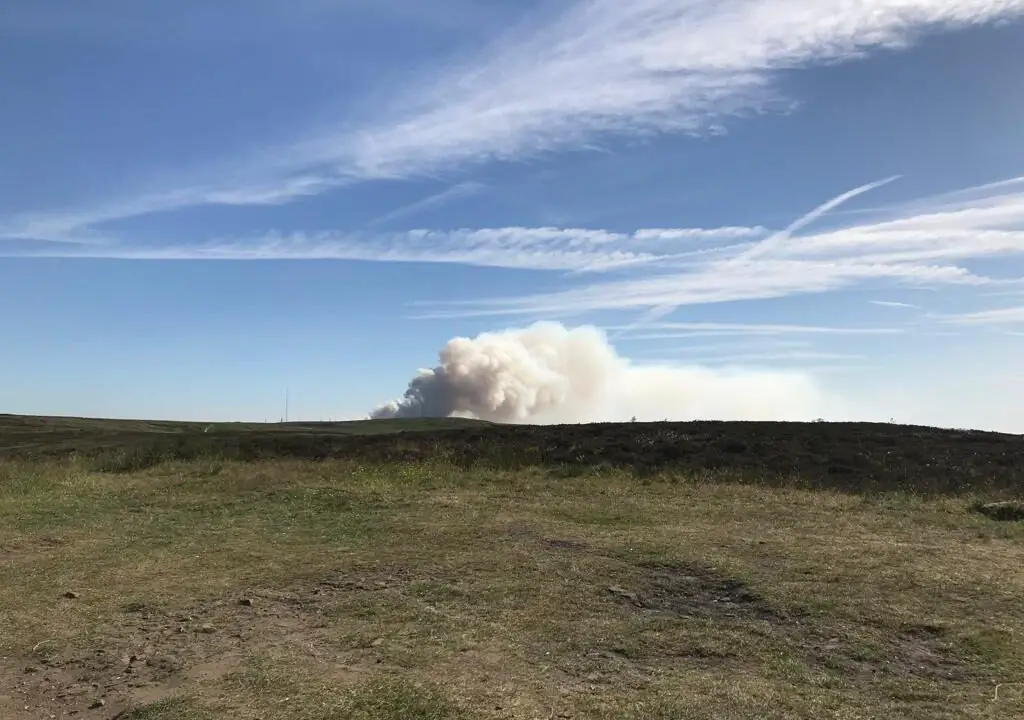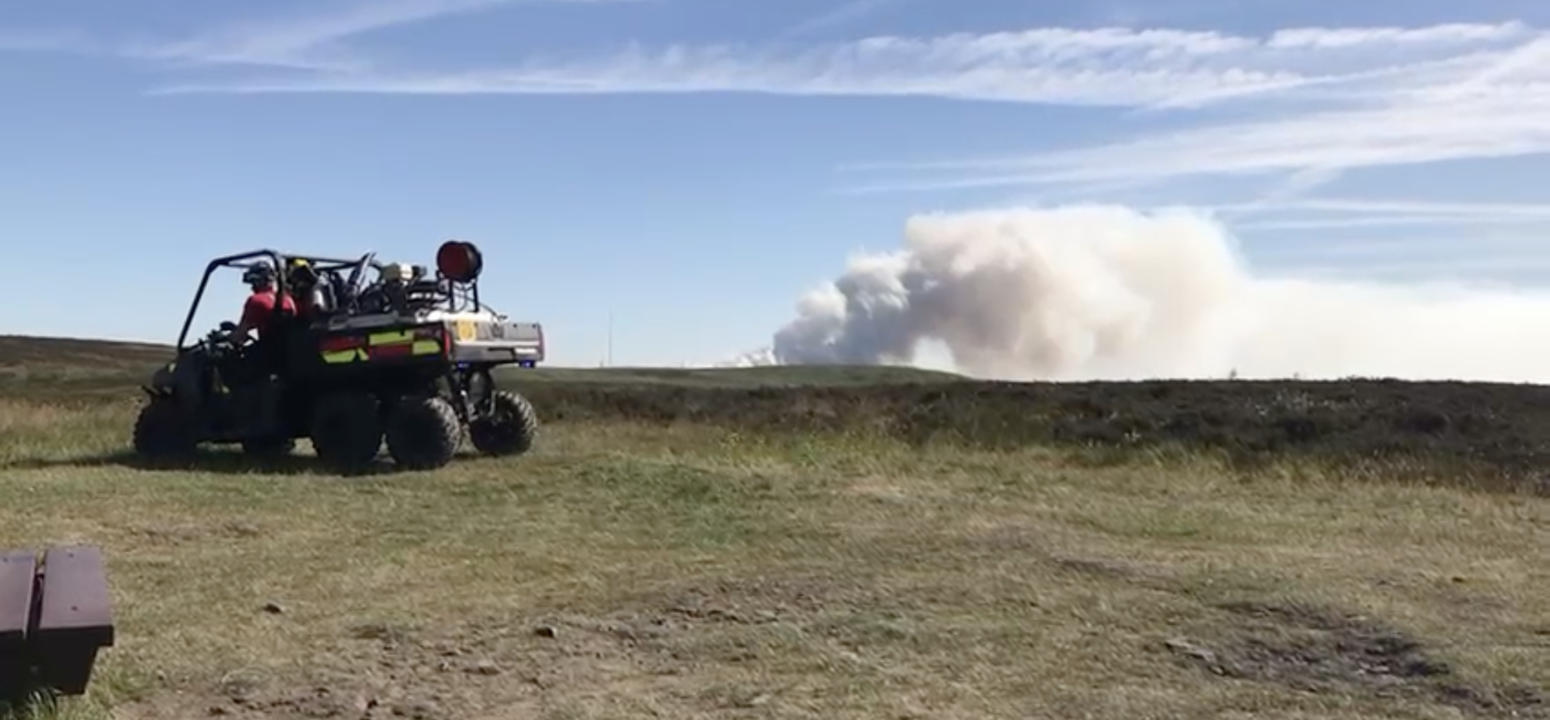Moorland fire in 2019 devastated an area of blanket peat moorland the size of about 1,000 football pitches. Strong winds caused it to rip through moorland in the South Pennines for four days before it was put out.

As temperatures soar and the dry weather continues, it’s time to raise awareness of wildfires and urge us all to be vigilant to prevent things happening again.
Moors for the Future Partnership has estimated the amount of carbon released as a result of a huge wildfire which devastated moorland in the South Pennines. The figure was equivalent to the annual carbon footprint of about 4,000 people.
An estimated 12,000 tonnes of carbon was burned in the blaze, resulting in 43,000 tonnes of CO2 being released into the atmosphere.
Wildfires on peatland kill the plants and animals living on the surface, but what people may not realise is that underneath the living plant layer, the peat can be up to six metres deep. Peat is a huge store of carbon, and burns readily when dry. This is one reason why fires on deep peat cause such harm – because they release so much of the carbon stored in the peat.
This fire took place in April 2019 and was – surprise, surprise – started by a barbecue.
The research was only possible because scientists from the Partnership were already monitoring the moor. They had installed ‘peat anchors’ – metal rods inserted in the peat to measure changes to its depth over time. After the fire, it was possible to measure how much peat had disappeared from around the anchors. This figure was then used to estimate the amount of peat lost across the whole fire area.
Paul Titterton, research and monitoring officer at Moors for the Future Partnership and lead author of a report on the findings, said “these figures show that the impact of moorland wildfires on the UK’s carbon reduction commitments is not to be underestimated. Not only do wildfires cause the release of huge amounts of carbon, but they create a knock-on effect where a burnt and bare moorland bog isn’t then absorbing and storing carbon like it should. Wildfires turn blanket bog from carbon sinks into carbon sources. It is simply too risky to light any kind of fire on or near the moors. As climate change continues, leading to longer spells of hot, dry weather, this problem is likely to become worse. Everyone should take note that if they see or suspect a moorland fire, or someone having a fire, they should phone 999 straight away. As the heatwave continues we’re asking people to once again be vigilant to prevent another fire at this scale.”
What to do if you see a moorland fire
- Get to safety
- Put a fire-break between you and the fire if possible (a farm track, fireroad etc)
- Note your location as best you can
- Dial 999 and ask for fire and rescue


You must be logged in to reply to this topic.